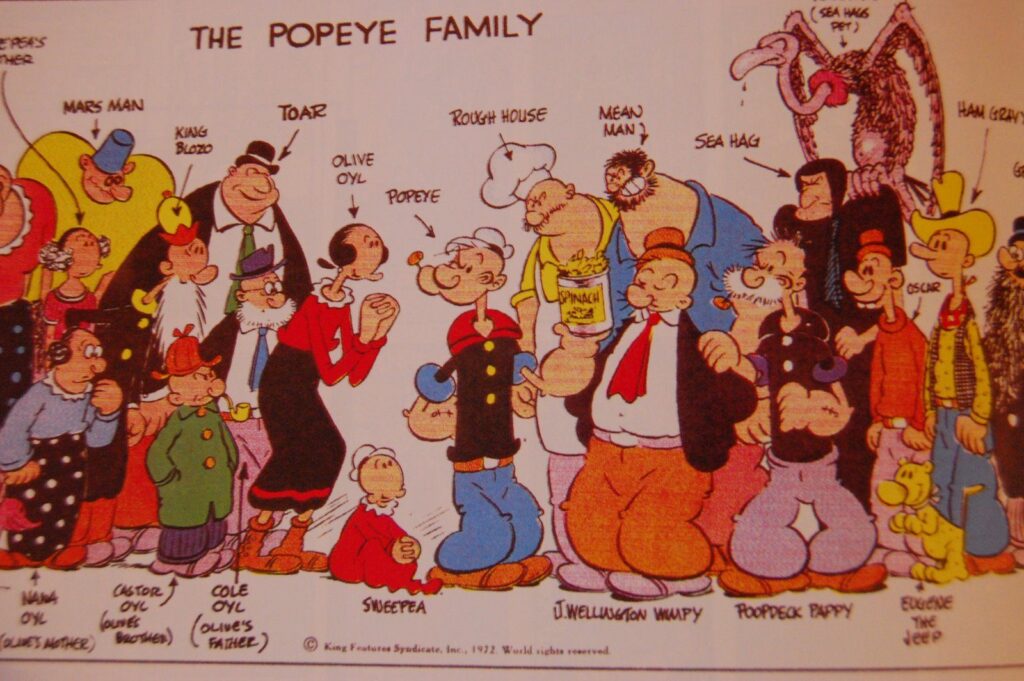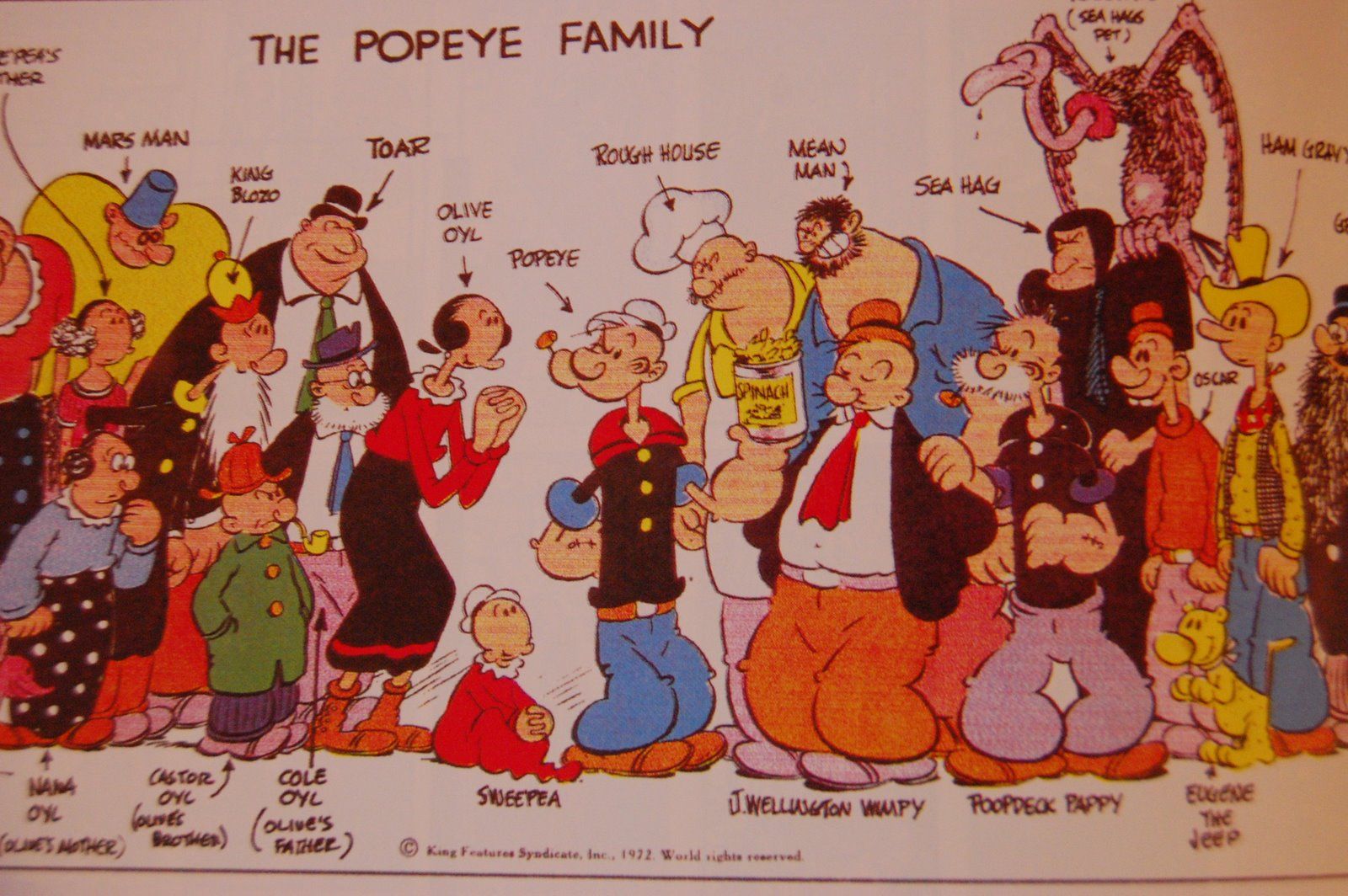
Exploring the Memorable Popeye Movie Characters: A Deep Dive
The 1980 Popeye movie, directed by Robert Altman and starring Robin Williams, brought the iconic comic strip and cartoon characters to life on the big screen. While the film received mixed reviews upon its release, it has since garnered a cult following for its unique visual style, musical score by Harry Nilsson, and memorable performances. This article delves into the key Popeye movie characters, examining their roles, personalities, and impact on the film’s enduring legacy. We’ll explore how these characters, drawn from E.C. Segar’s original creations, were adapted for the cinematic medium, and why they continue to resonate with audiences today. The Popeye movie characters are more than just adaptations; they are reinterpretations that add depth and nuance to the beloved figures.
Popeye the Sailor Man
Undoubtedly the central figure, Popeye, played by Robin Williams, is the heart and soul of the movie. Williams’ portrayal captures Popeye’s gruff demeanor, his distinctive mumbling, and his unwavering commitment to justice. His love for Olive Oyl and his reliance on spinach for superhuman strength are, of course, faithfully represented. But the movie also explores Popeye’s vulnerabilities and his struggle to connect with his long-lost father, Poopdeck Pappy. Williams’ performance is a masterclass in physical comedy and heartfelt emotion, making his Popeye both hilarious and relatable. The character of Popeye is so central to the film; he’s the anchor for all the other zany personalities.
Olive Oyl
Shelley Duvall’s Olive Oyl is perhaps the most iconic interpretation of the character ever put on screen. Duvall embodies Olive’s lanky frame, her frantic energy, and her perpetually distressed state with remarkable accuracy. While Olive is often portrayed as a damsel in distress, Duvall’s performance also hints at her underlying strength and independence. She’s easily flustered and prone to making impulsive decisions, but her loyalty to Popeye and her unwavering optimism shine through. The movie explores Olive’s relationship with Popeye in a charming and often humorous way, highlighting the quirks and eccentricities that make their dynamic so endearing. Olive Oyl’s character is a pivotal part of the Popeye narrative.
Bluto (or Brutus)
As Popeye’s perennial rival, Bluto (played by Paul L. Smith) serves as the primary antagonist of the film. Smith’s Bluto is a hulking brute, driven by greed and a relentless desire to win Olive Oyl’s affections. He embodies the classic bully archetype, using his size and strength to intimidate others and get his way. While Bluto is undoubtedly a villain, the movie also injects moments of humor into his character, making him a more complex and entertaining adversary. His constant clashes with Popeye provide the film with its most memorable action sequences, culminating in a final showdown that showcases Popeye’s spinach-fueled power. Bluto is a critical character for driving the central conflicts in the Popeye movie.
Poopdeck Pappy
Ray Walston’s Poopdeck Pappy is Popeye’s estranged father, a crusty and cynical old sailor who abandoned his son at a young age. Pappy’s arrival in Sweethaven adds a layer of emotional depth to the film, as Popeye grapples with feelings of resentment and a desire for his father’s approval. Walston’s performance is both comedic and poignant, capturing Pappy’s gruff exterior and his underlying vulnerability. The relationship between Popeye and Pappy is a central theme of the movie, exploring themes of family, forgiveness, and the importance of connection. This complex dynamic makes Pappy a memorable and significant Popeye movie character. The film uses Pappy to explore themes of abandonment and reconciliation.
Wimpy
Wimpy, portrayed by Paul Dooley, is Popeye’s gluttonous and perpetually hungry friend, famous for his insatiable craving for hamburgers. Dooley’s performance captures Wimpy’s laid-back demeanor and his unwavering dedication to his culinary obsession. While Wimpy often serves as comic relief, he also demonstrates surprising moments of loyalty and resourcefulness. His constant pursuit of hamburgers provides the film with some of its most humorous moments, and his catchphrase, “I’ll gladly pay you Tuesday for a hamburger today,” has become iconic. Wimpy adds a layer of levity to the Popeye movie, providing consistent comedic relief. [See also: The Best Movie Sidekicks of All Time]
Swee’Pea
Swee’Pea, the foundling infant whom Popeye adopts, is a catalyst for much of the film’s plot. The child’s presence forces Popeye to confront his own paternal instincts and to take on the responsibilities of fatherhood. While Swee’Pea doesn’t speak, his adorable appearance and his knack for getting into trouble provide the film with plenty of comedic moments. Swee’Pea’s relationship with Popeye is at the heart of the movie, demonstrating the sailor’s capacity for love and compassion. The character of Swee’Pea helps humanize Popeye, showing a softer side to the tough sailor. Swee’Pea is a central figure in Popeye’s character development.
Other Notable Characters
In addition to the main characters, the Popeye movie features a colorful cast of supporting characters who populate the town of Sweethaven. These include:
- Commodore: The pompous and self-important leader of Sweethaven.
- Taxman: A greedy and unscrupulous official who seeks to exploit the town’s residents.
- The Families: A group of eccentric and often comical townspeople who add to the film’s quirky atmosphere.
These supporting characters, while not as central to the plot as Popeye, Olive Oyl, and Bluto, contribute to the film’s overall charm and its unique sense of place. They help to create a vibrant and memorable world that is both familiar and fantastical. Their presence enriches the narrative and adds depth to the story of Popeye and his adventures.
The Legacy of the Popeye Movie Characters
The Popeye movie characters, as portrayed in Robert Altman’s film, have had a lasting impact on popular culture. While the movie itself may have been initially divisive, the performances of Robin Williams, Shelley Duvall, and the rest of the cast have become iconic. Their interpretations of these beloved characters have influenced subsequent adaptations and continue to resonate with audiences today. The Popeye movie serves as a testament to the enduring appeal of E.C. Segar’s original creations and the power of live-action adaptations to bring comic book characters to life. The unique visual style and musical score of the film further contribute to its lasting legacy. The Popeye movie characters are forever etched in the minds of those who have seen the film.
The film’s enduring popularity has also led to renewed interest in the original comic strips and animated cartoons. Many fans of the movie have sought out these earlier iterations of Popeye, discovering the rich history and diverse range of stories that have been told about the character over the years. The Popeye movie, therefore, serves as a gateway to a wider world of Popeye-related media. The Popeye movie characters are a significant part of this larger cultural phenomenon. The film’s success has helped to ensure that Popeye remains a relevant and beloved character for generations to come.
In conclusion, the Popeye movie characters are a vital component of the film’s enduring appeal. From Robin Williams’ iconic portrayal of Popeye to Shelley Duvall’s unforgettable Olive Oyl, each character is brought to life with humor, heart, and a deep understanding of the source material. These characters, along with the film’s unique visual style and musical score, have helped to create a cinematic experience that is both entertaining and thought-provoking. The Popeye movie characters are more than just adaptations; they are reinterpretations that add depth and nuance to the beloved figures, ensuring their continued relevance and popularity for years to come. The film remains a cult classic, celebrated for its originality and its memorable cast of Popeye movie characters. These characters continue to be enjoyed by audiences of all ages, solidifying their place in the annals of film history.

